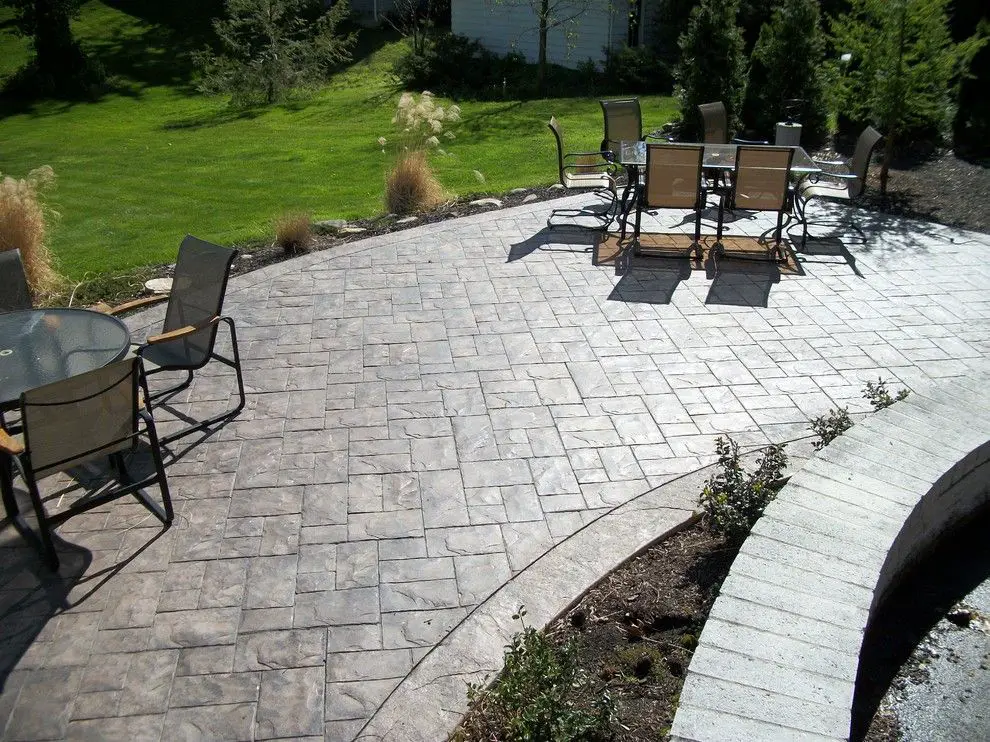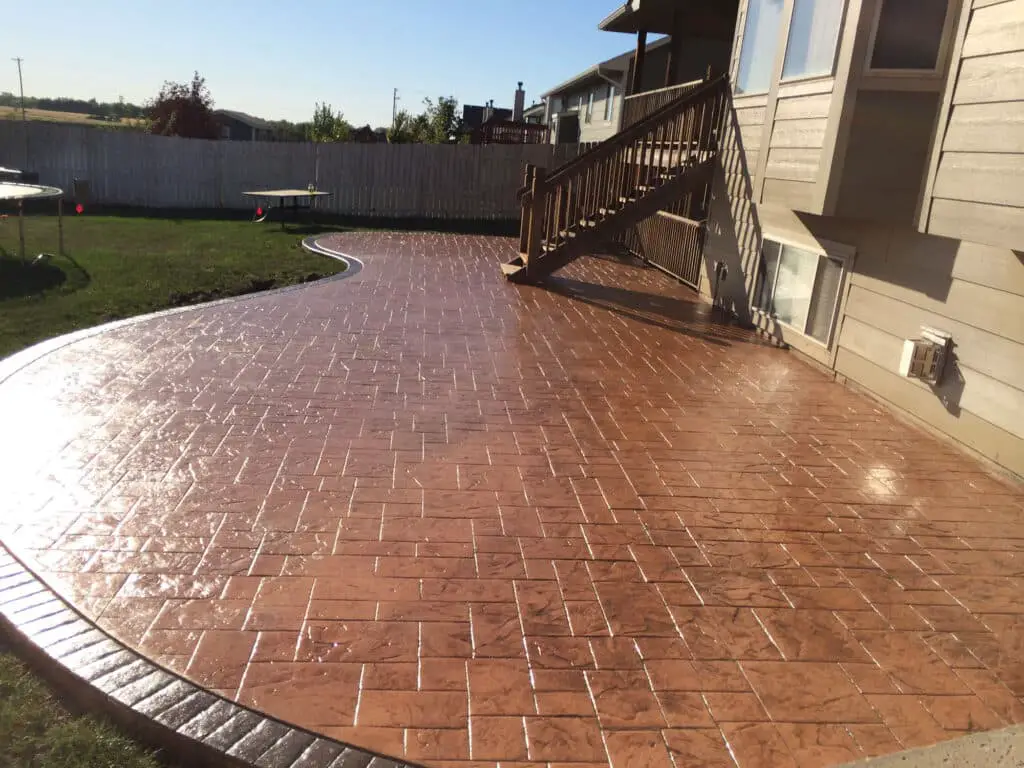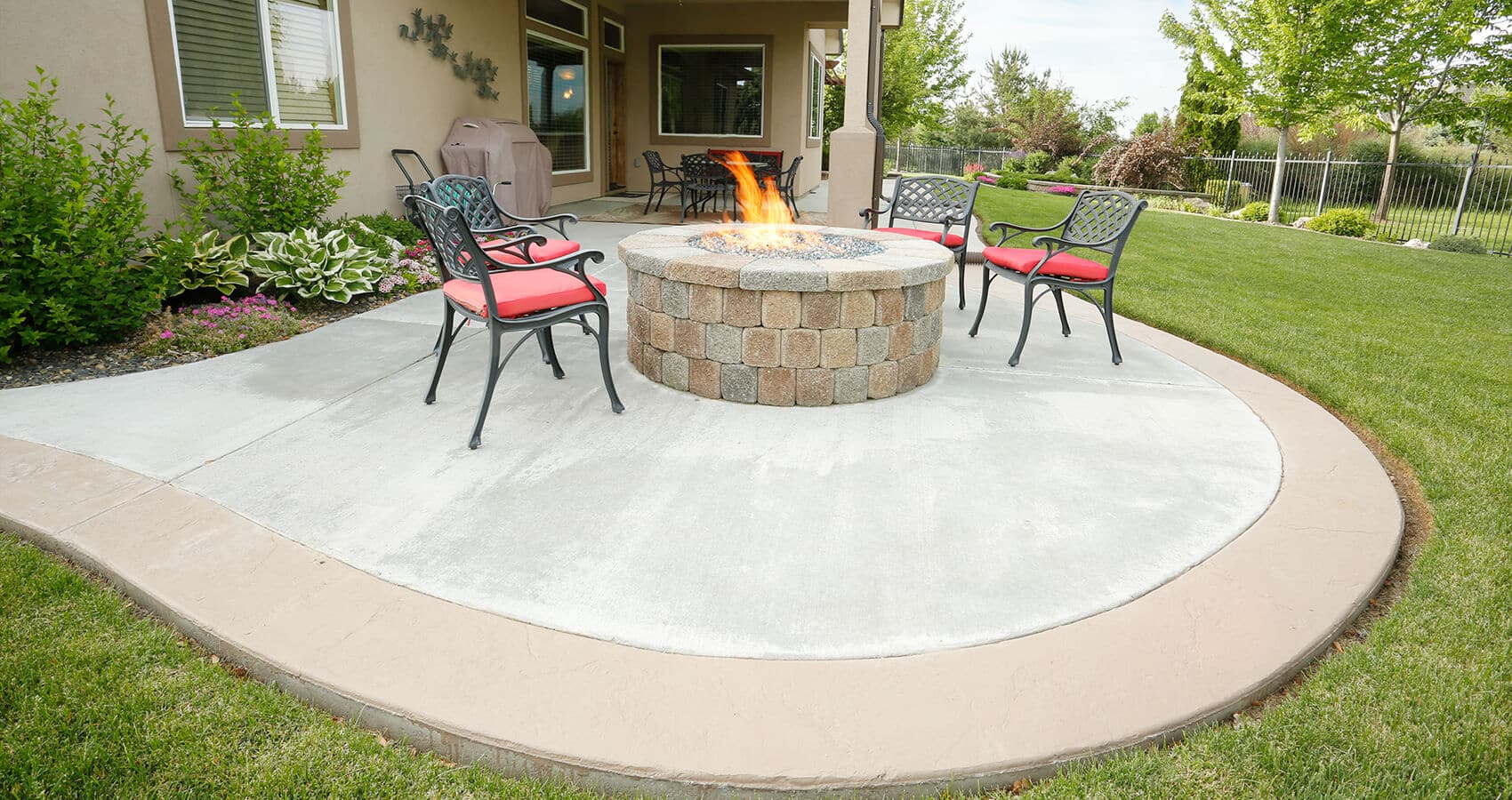How To Level Concrete Patio
Introduction
How To Level Concrete Patio: Before diving into the leveling process, carefully inspect your concrete patio to identify the areas that need attention. Look for cracks, sunken spots, or uneven surfaces. Mark these problematic areas to guide you during the leveling process. To successfully level your concrete patio, you’ll need the right tools and materials. Some of the essential items include a shovel, a concrete mixer (or a mixing trough), a trowel, a level, a rubber mallet, wooden stakes, string lines, and, of course, the concrete mix.
Start by clearing the wash patio of any furniture, plants, or obstacles. Next, remove any loose debris, dirt, or vegetation that might interfere with the leveling process. Clean the entire surface thoroughly, and consider pressure washing if there are stubborn stains. To maintain a uniform level throughout the patio, you’ll need to build forms. These are wooden frames that outline the area you’re working on. Use wooden stakes and string lines to establish the correct grade and slope, ensuring proper drainage away from your house.
Prepare the concrete mix according to the manufacturer’s instructions. You can opt for a self-leveling concrete mix, which is easier to work with for small unevenness. Pour the concrete into the area outlined by the forms, making sure it reaches the desired level. With the concrete poured, use a long straight board (such as a screed board) to smoothen the surface. Move the board back and forth in a sawing motion across the forms to level the concrete. Use a concrete vibrator or a rubber mallet to remove any air bubbles trapped within the concrete. This step ensures the concrete settles evenly and strengthens the bond.

How do you level exterior concrete?
How To Level An Uneven Concrete Slab
- Small dime-sized holes are drilled into the sunken sections of your concrete slab.
- Expanding polyurethane foam is injected into the holes.
- As the foam fills the space below, your slab is lifted until the uneven section is leveled with the rest of the concrete.
Take a close look at the outside concrete surface before you start leveling. Find any cracks, holes, or uneven places that need fixing. Figuring out how big the problem is will help you choose the right leveling method and figure out what materials you’ll need.
You’ll need the right tools and ingredients to level concrete outside. A trowel, a bull float, a level, a rubber mallet, wooden pegs, and string lines are some of the most common tools used in construction. A concrete mix that is right for your job and, if needed, a concrete bonding agent are also things you’ll need.
Get rid of any furniture, plants, or other things that might be in the way. Get rid of any loose dirt, rocks, or plants that could get in the way of the leveling process. A smoother finish and better bonding will come from cleaning the surface well.
To keep the level of the concrete the same all over, use wooden pegs and string lines to make forms. Forms help form the concrete and get it to the right height by acting as guides. Make sure the forms are level and have the right slope so that water can drain away from the buildings.
Can a concrete patio be leveled?
Leveling concrete is a way to fill in holes under slabs of concrete that are sagging. This can be done on steps, porches, patios, sidewalks, and roads. For this method, holes are drilled into the current concrete, and a leveling material is pumped through the holes and under the slab.
Check out the state of your concrete patio before you start leveling it. Check for cracks, holes, or places that aren’t level. Finding the trouble spots will help you figure out the best way to level the area. Also, make sure the patio is free of any furniture, plants, or other debris, and clean the area very well so the leveling material sticks better.
Self-leveling concrete mix is one of the most common ways to make a concrete patio level. This particular kind of concrete is made to spread out and flow evenly, filling in low spots and making the surface level. It’s simple to use and does a great job of making small leveling changes.
To keep the patio flat all the way across, use wooden stakes and string lines to make forms. The forms help shape the self-leveling concrete and make sure the right height is reached. Also, make sure the grade is right so that water can drain away from your home and keep water from building up again.
Follow the directions on the package to make the self-leveling concrete mix. Usually, this is done by mixing the powder with water until the mixture is smooth and easy to work with. Fill in the low spots with self-leveling concrete and pour it into the forms you’ve made. This will bring the surface to the right level.
What is the best way to fix an uneven concrete floor?
If your concrete floor isn’t level, the fastest and best way to fix it is to use a self-leveling compound. This fills in the low spots and levels the floor out fully. Floor topping can fix a lot of problems with floors and make the surface look good enough to be polished.
Self-leveling concrete is a popular and effective way to fix concrete floors that are slightly to moderately uneven. The cement-based mixture is carefully made so that it spreads out and levels itself after being poured. For this method to work, you need to follow the manufacturer’s steps for making the self-leveling concrete and then pour it over the uneven spots. The mixture will spread out and fill in the holes, making the surface flat. It’s easy to work with self-leveling concrete, and the finish is smooth and even.
Concrete grinding is a good way to fix uneven concrete floors that are caused by small flaws or high spots. To level the surface and grind down the higher spots, a concrete grinder with diamond-grit discs is used. This process can take a long time and be very dusty, so it’s important to wear the right safety gear and take steps to keep the dust under control.
This is a way to lift and level concrete slabs that have sunk. It is also called slab jacking or concrete leveling. It works best on big areas that are uneven because the ground has settled or been worn away. For this method, tiny holes are drilled in the concrete, and a special grout mixture is pumped below the slab. This mixture is usually made up of cement, sand, and other ingredients. The grout then swells, which brings the concrete slab back to the right level.
Is it easy to level concrete?
Self-leveling concrete is very do-it-yourself-friendly because it is quick and easy to put down. Self-leveling concrete can be used to fix floors that are a little crooked in your home. Use a spirit level to get a good idea of how uneven the surface is, then pour the cement on top and spread it out.
If the concrete floor only has small bumps or low spots, it may not be too hard to level. Self-leveling concrete is a great choice in these situations. Self-leveling concrete is made to slowly and evenly spread out, filling in low spots and making a smooth surface without a lot of changes that need to be made by hand.
When you use self-leveling concrete mix, the process of leveling is a lot easier. When you pour this kind of concrete, you can leave it alone to settle and make a smooth surface. Self-leveling concrete is often used for do-it-yourself jobs because it is simple to work with and has a smooth finish.
There are a few different ways to level that are good for do-it-yourselfers and homeowners with simple building skills. These methods, like self-leveling concrete, concrete patching, or spot fixes, don’t need any special tools and can be done with tools that are easy to find.
If you need help leveling something big or there is a lot of unevenness, you should get professional help. Uneven concrete floors that are caused by problems with the structure, a lot of settlement, or big areas of damage may need special tools and knowledge to fix. Concrete contractors who are professionals know how to correctly diagnose the problem and use the best answer.
What is self level for concrete?
Concrete and self-leveling concrete are both made of a cementitious mixture. But it moves more easily and sets up much faster than concrete. It is mixed with water, pumped or put into place, and then a gauge rake is used to spread it out evenly. It continues to flow smoothly and level itself out after it’s been spread out.
The odd mix of ingredients lets the concrete spread and settle, so there’s no need to trowel it, which speeds up the installation process.
This concrete levels itself because it has a low viscosity and can flow easily. Self-leveling concrete is wet enough to move across a floor or other surface when mixed with water. Because it flows faster than regular concrete, it fills in low spots, hardens on its own, and levels out.
Self-leveling concrete evens out small to large surface bumps in concrete floors so they can be used with tiles, carpets, vinyl, and hardwood. It also smooths out and levels concrete blocks that have small cracks, chips, or flaking.
Before you use self-leveling concrete, you should think about the needs of the project, the leveling area, and any other limits. For bigger leveling jobs or problems with the structure, it’s best to hire a skilled concrete contractor.
Why does concrete become uneven?
Water can wash away the soil under the concrete slab, shifting or cracking it.
Poor Installation: Uneven concrete often results from poor installation. Installation errors in concrete mixing, pouring, and leveling can cause surface elevation discrepancies.
Settling and Soil Movement: The earth beneath the concrete might shift and settle, making the slab uneven. Changes in soil moisture, natural compaction, or organic material breakdown can cause this settling.
Erosion: Heavy rain or inadequate drainage can wash away the soil beneath the concrete, creating gaps and sinking and uneven surfaces.
Concrete expands and compresses with temperature. Concrete can crack and become uneven amid extreme temperature swings, especially in freezing and thawing zones.
Tree Roots: Underground tree roots can lift or split concrete, creating an uneven surface.
Heavy loads and impact: Driving heavy trucks or equipment over concrete can stress and deform it, causing unevenness.
What equipment is used to level concrete?
Screeds
A screed smooths out the top of the concrete by cutting off any extra. This leaves a smooth, level surface. For concrete areas that have already been poured but have not set evenly, screeds can be very helpful. Once the concrete has been poured, trowels are useful finishing tools that make sure it is smooth.
A screed board, which is sometimes called a straightedge or leveling board, is a simple tool used to make new concrete smooth and level. Usually, a long, straight piece of metal or wood is used, which is moved back and forth across the concrete. To level the surface and get rid of extra concrete, the screed board is moved along the top ends of the forms or the edge of the concrete.
A bull float is a big, flat tool that can be made of glass, metal, or wood. It is put on top of screed to make the concrete surface even flatter and smoother. The bull float is usually pushed or pulled across the concrete. It floats on top of the concrete and helps fill in small holes and smooth out rough spots.
A concrete vibrator is a machine that gets rid of air bubbles in newly poured concrete. It is necessary to get a denser and more uniform concrete mix, which helps the concrete level better. You can hold a vibrator in your hand or connect it to a bull float or screed board.
Laser levels are very accurate tools that are used to make sure that big areas of concrete are level and graded correctly. They shine a light on the surface, which lets the operator figure out how high the surface is. Laser levels are often used for big projects like building roads, airport runways, and factory floors.
What is the main problem in concrete?
By looking at the pavement, you can find places that are damaged or breaking down. Construction mistakes, disintegration, scaling, cracking, efflorescence, weathering, spalling, and popouts are all problems that can happen with concrete.
One of the most common problems with concrete is that it cracks. It can happen because of things like changes in temperature, cooling shrinkage, or not curing properly. Cracks in concrete not only make it look bad, but they can also be bad for the structure because they let water and other things into the concrete and damage it even more.
Scaling is when the surface of the concrete flakes or peels off. This can happen because of freeze-thaw cycles, deicing salts, or bad finishing methods used during construction. Scaling can make the surface of the concrete more likely to get damaged and can make it look rough and uneven.
Spalling is when layers of concrete chip off or break off. This is usually caused by the corrosion of steel reinforcements that are buried in the concrete. This problem can make the concrete less stable, and it’s common to see it in older buildings or buildings that are exposed to harsh weather.
ASR is a chemical process that happens when alkalis in the cement mix with reactive forms of silica in some aggregates. The reaction leads to the formation of a gel-like material over time, which makes the concrete crack and expand.
When soluble salts move to the surface of concrete and react with water, a white, powdery layer called efflorescence forms on the surface. It’s mostly an aesthetic problem, but it can mean that too much water is moving through the concrete.

Conclusion
The key to a successful patio leveling project lies in thorough preparation and attention to detail. Take the time to assess your patio’s condition, gather the necessary tools and materials, and create a well-defined plan before starting. Building forms and establishing the correct grade is crucial to ensure proper drainage and prevent future issues. While leveling a concrete patio is a DIY-friendly project, it’s essential to recognize the scope of the work and your own abilities.
During the leveling process, use the right techniques to pour and level the concrete patio properly. Removing air bubbles and achieving a smooth finish will contribute to the overall durability and appearance of the patio. Remember, patience is essential during the curing period. Allowing the concrete to cure slowly and adequately will significantly enhance its strength and longevity. Additionally, applying a sealant after curing will protect the surface from potential damage caused by stains and water.
For more extensive or complex patio leveling projects, consider consulting a professional to ensure a flawless outcome. A leveled concrete patio will not only increase the value of your home but also provide a comfortable and inviting space for outdoor activities, relaxation, and entertainment. The investment of time and effort in leveling your concrete patio will be well worth it as you enjoy your revamped outdoor oasis for years to come.








